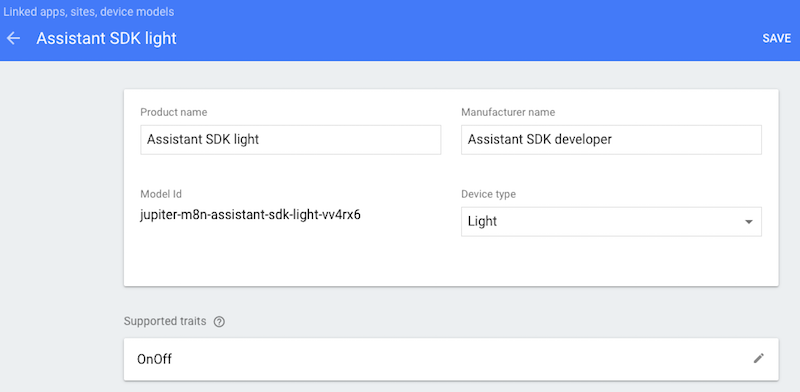Google Assistant muss eine Anfrage mit einem Befehl verknüpfen können, der an Ihr Gerät gesendet werden soll. Dazu müssen Sie deklarieren, welche Funktionen Ihr Gerät unterstützt. Diese Fähigkeiten werden als Eigenschaften bezeichnet. Diese Merkmale deklarieren Sie innerhalb Ihres Gerätemodells.
Google hat bereits eine Vielzahl von gemeinsamen Eigenschaften auf vielen Geräten erstellt. Diese Merkmale sind nicht an nur einen Gerätetyp gebunden. Sie können sie beliebig verwenden.
Trait hinzufügen
Sie haben zuvor ein Modell definiert. Aktualisieren Sie es jetzt, indem Sie eine Eigenschaft hinzufügen. Füge in diesem Fall eine Ein/Aus-Eigenschaft hinzu, um eine an deinem Gerät angeschlossene LED zu steuern.
Öffnen Sie das Projekt in der Actions Console.
Wählen Sie in der linken Navigationsleiste den Tab Geräteregistrierung aus.
Klicken Sie auf ein Modell in der Liste, um es zu bearbeiten.

Klicke im Feld Unterstützte Traits auf das Stiftsymbol, um die Eigenschaft hinzuzufügen.

Klicken Sie das Kästchen OnOff an. Klicken Sie auf SPEICHERN.

Speichern Sie die Änderungen am Modell. Klicken Sie noch einmal auf SPEICHERN.


